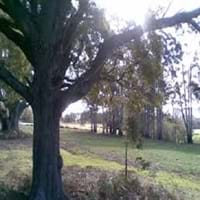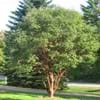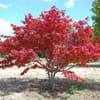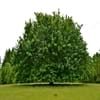Life Span
Annual
Perennial
Type
Tree
Broadleaf Evergreen
Origin
Australia
Australia
Types
Not Available
Bigleaf hydrangea, Hortensia, Smooth hydrangea, Oakleaf hydrangea, Annabelle
Number of Varieties
Not Available
Habitat
Fertile bottom land, moist forests, Moist Soils, Moist woods, Roadsides, Sandy areas, tropical environments, Tropical rainforest, Tropical regions, Wet lands
Forest edges, Hillside, Woods
USDA Hardiness Zone
8-11
9-15
AHS Heat Zone
12-10
Not Available
Sunset Zone
8, 9, 13, 14, 15, 16, 17, 18, 19, 20, 21, 22, 23, 24
21,22
Habit
Upright/Erect
Spreading
Minimum Height
Not Available
Minimum Width
Not Available
Flower Color
Light Yellow
Red
Flower Color Modifier
Bicolor
Bicolor
Fruit Color
Brown
Sandy Brown
Leaf Color in Spring
Green, Gray Green
Green, Sea Green, Rose, Bronze
Leaf Color in Summer
Green, Gray Green
Green, Light Green
Leaf Color in Fall
Green, Gray Green
Green, Light Green, Gray Green
Leaf Color in Winter
Green, Gray Green
Green, Gray Green
Leaf Shape
Long Linear
Oblovate
Plant Season
Spring, Summer, Fall, Winter
Spring, Summer, Fall, Winter
Sunlight
Full Sun
Full Sun, Partial Sun
Type of Soil
Loam, Sand
Loam, Sand
The pH of Soil
Acidic, Neutral, Alkaline
Acidic, Neutral
Soil Drainage
Well drained
Well drained
Bloom Time
Spring
Indeterminate
Tolerances
Drought
Wet Site, Pollution, Drought, Salt, Soil Compaction
Where to Plant?
Ground
Container, Ground
How to Plant?
Seedlings
Seedlings, Stem Planting
Plant Maintenance
Medium
Medium
Watering Requirements
Average Water Needs
Not Available
In Summer
Lots of watering
Drought Tolerant
In Spring
Moderate
Moderate
In Winter
Average Water
Average Water
Soil pH
Acidic, Neutral, Alkaline
Acidic, Neutral
Soil Type
Loam, Sand
Loam, Sand
Soil Drainage Capacity
Well drained
Well drained
Sun Exposure
Full Sun
Full Sun, Partial Sun
Pruning
Remove damaged leaves, Remove dead branches, Remove dead leaves
Remove damaged leaves, Remove dead branches, Remove dead leaves
Fertilizers
All-Purpose Liquid Fertilizer
All-Purpose Liquid Fertilizer
Pests and Diseases
Red blotch
Red blotch
Plant Tolerance
Drought
Wet Site, Pollution, Drought, Salt, Soil Compaction
Flower Petal Number
Single
Single
Foliage Texture
Medium
Fine
Foliage Sheen
Matte
Matte
Attracts
Hummingbirds, Butterflies
Bees, Flies
Allergy
Asthma, Eye irritation, Respiratory problems, Skin irritation
Chest tightness, Diarrhea, Dizziness, Nausea, Vomiting
Aesthetic Uses
Not Used For Aesthetic Purpose
Not Available
Beauty Benefits
Not Available
Not Available
Edible Uses
Insignificant
Not Available
Environmental Uses
Air purification, Shadow Tree
Air purification
Medicinal Uses
Not Available
Fever, Kidney problems, Urinary tract problems
Part of Plant Used
Bark, Tree trunks
Flowers, Root
Other Uses
Application in Furniture, Constructing Boats, Used in Furniture, Wood is used fore making tools
Not Available
Used As Indoor Plant
No
Not Available
Used As Outdoor Plant
Yes
Yes
Garden Design
Screening / Wind Break, Shade Trees, Street Trees
Container, Feature Plant, Hedges, Mixed Border, Screening, Wind Break, Topiary, Bonsai, Espalier, Tropical
Botanical Name
ACACIA melanoxylon
CALLISTEMON citrinus
Common Name
Australian Blackwood, Blackwood
Crimson Bottlebrush
In Hindi
काली लकड़ी
Hydrangea
In German
Schwarzes Holz
Hortensie
In French
Bois noir
Hortensia
In Spanish
Blackwood
Hortensia
In Greek
Μαυρο ξυλο
υδραγεία
In Portuguese
Madeira preta
Hortênsia
In Polish
Czarne drewno
Hortensja
Phylum
Magnoliophyta
Not Available
Class
Magnoliopsida
Not Available
Order
Fabales
Not Available
Family
Fabaceae
Myrtaceae
Genus
Acacia
Not Available
Clade
Angiosperms, Eudicots, Rosids
Not Available
Tribe
Acacieae
Not Available
Subfamily
Not Available
Not Available
Number of Species
Not Available
Properties of Blackwood and Crimson Bottlebrush
Wondering what are the properties of Blackwood and Crimson Bottlebrush? We provide you with everything About Blackwood and Crimson Bottlebrush. Blackwood doesn't have thorns and Crimson Bottlebrush doesn't have thorns. Also Blackwood does not have fragrant flowers. Blackwood has allergic reactions like Asthma, Eye irritation, Respiratory problems and Skin irritation and Crimson Bottlebrush has allergic reactions like Asthma, Eye irritation, Respiratory problems and Skin irritation. Compare all the properties and characteristics of these two plants. Find out which of these plant can be used as indoor plant. If you are interested to decorate your house and garden, find out aesthetic uses, compare them and select the plant which will beautify your surrounding. Along with beautification, try comparing medicinal and edible uses of Blackwood and Crimson Bottlebrush and you can choose the plant having best and most benefits.
Season and Care of Blackwood and Crimson Bottlebrush
Season and care of Blackwood and Crimson Bottlebrush is important to know. While considering everything about Blackwood and Crimson Bottlebrush Care, growing season is an essential factor. Blackwood season is Spring, Summer, Fall and Winter and Crimson Bottlebrush season is Spring, Summer, Fall and Winter. The type of soil for Blackwood is Loam, Sand and for Crimson Bottlebrush is Loam, Sand while the PH of soil for Blackwood is Acidic, Neutral, Alkaline and for Crimson Bottlebrush is Acidic, Neutral.
Blackwood and Crimson Bottlebrush Physical Information
Blackwood and Crimson Bottlebrush physical information is very important for comparison. Blackwood height is Not Available and width Not Available whereas Crimson Bottlebrush height is 530.00 cm and width 470.00 cm. The color specification of Blackwood and Crimson Bottlebrush are as follows:
Blackwood flower color: Light Yellow
Blackwood leaf color: Green and Gray Green
Crimson Bottlebrush flower color: Red
- Crimson Bottlebrush leaf color: Green, Sea Green, Rose and Bronze
Care of Blackwood and Crimson Bottlebrush
Care of Blackwood and Crimson Bottlebrush include pruning, fertilizers, watering etc. Blackwood pruning is done Remove damaged leaves, Remove dead branches and Remove dead leaves and Crimson Bottlebrush pruning is done Remove damaged leaves, Remove dead branches and Remove dead leaves. In summer Blackwood needs Lots of watering and in winter, it needs Average Water. Whereas, in summer Crimson Bottlebrush needs Drought Tolerant and in winter, it needs Average Water.





